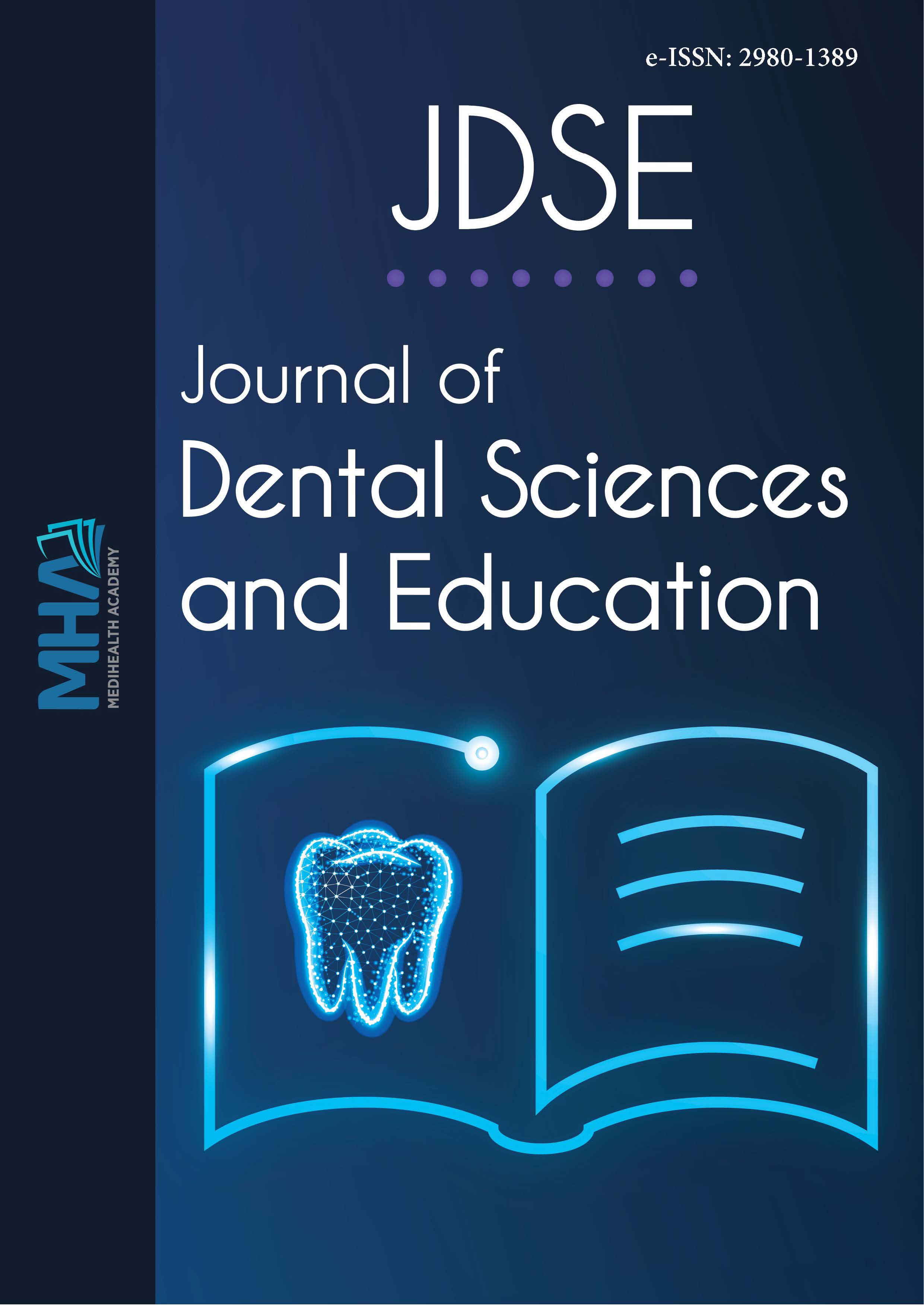1. Kornilova TV, Kornilov SA, Chumakova MA. Subjective evaluations ofintelligence and academic self-concept predict academic achievement:evidence from a selective student population. Learn Individ Differ.2009;19(4):596-608.
2. Guo J-P, Lv S, Wang S-C, et al. Reciprocal modeling of universitystudents’ perceptions of the learning environment, engagement, andlearning outcome: a longitudinal study. Learn Instr. 2023;83:101692.
3. Mayya SS, Roff S. Students' perceptions of educational environment:a comparison of academic achievers and under-achievers at kasturbamedical college, India. Educ Health. 2004;17(3):280-291.
4. Lizzio A, Wilson K, Simons R. University students’ perceptions of thelearning environment and academic outcomes: implications for theoryand practice. Stud High Educ. 2002;27(1):27-52.
5. Nja CO, Anari MI, Erim CM, et al. Learning space, students’collaboration, educational outcomes, and interest: exploring thephysical, social and psychological mediators. Heliyon. 2023;9(4).
6. Beh HJ, Rashidi A, Talei A, et al. Developing engineering students’capabilities through game-based virtual reality technology for buildingutility inspection. Eng Constr Archit Manag. 2022;29(7):2854-2877.
7. Hsu CH, Chin DC, Yau OK. Usage of informal learning spaces amongstudents from academic units with versus without dedicated buildingson campus. J Learn Spaces. 2022;11(1):1-12.
8. Andre A, Pierre GC, McAndrew M. Quality of life among dentalstudents: a survey study. J Dent Educ. 2017;81(10):1164-1170.
9. Diener E, Suh E. Measuring quality of life: economic, social, andsubjective indicators. Soc Indic Res. 1997;40:189-216.
10. Savaşır I. Ölçek uyarlamasındaki sorunlar ve bazı çözüm yolları. TürkPsikol Derg. 1994;9(33):27-32.
11. Maddi SR, Harvey RH, Khoshaba DM, et al. The personality construct of hardiness, III: relationships with repression, innovativeness,authoritarianism, and performance. J Pers. 2006;74(2):575-598.
12. Walsh F. Family resilience. New York: Guilford Press; 2006.
13. Klag S, Bradley G. The role of hardiness in stress and illness: anexploration of the effect of negative affectivity and gender. Br J HealthPsychol. 2004;9(2):137-161.
14. Smith BW, Dalen J, Wiggins K, et al. The brief resilience scale: assessingthe ability to bounce back. Int J Behav Med. 2008;15:194-200.
15. Sinclair VG, Wallston KA. The development and psychometricevaluation of the brief resilient coping scale. Assessment. 2004;11(1):94-101.
16. Connor KM, Davidson JR. Development of a new resilience scale:the Connor-Davidson resilience scale (CD-RISC). Depress Anxiety.2003;18(2):76-82.
17. Köşker P, Demirbaş AK. Öğrencilerin diş hekimliği fakültesini tercihnedenleri ve fakülte ile ilgili ilk izlenimleri. EÜ Dişhek Fak Derg.2014;35(2):32-36.
18. Yakıcı EG. Beliren yetişkinlerin psikolojik dayanıklılık düzeylerindeyordayıcı değişkenler olarak yaşam doyumu ve yalnızlık. [PhD thesis].Nec Erbakan Uni. 2017.
19. Kolcu G, Alkış M, Kolcu Mİ, et al. Diş hekimliği eğitiminde eğitimortamının değerlendirilmesi. Smyrna Tıp Dergisi. 2020;40-45.
20. Gil YM, Hong JS, Ban JL, et al. Dental students’ perception of theireducational environment in relation to their satisfaction with dentistrymajor: a cross-sectional study. BMC Med Educ. 2023;23:508.
21. Stormon N, Ford PJ, Eley DS. DREEM-ing of dentistry: Students’perception of the academic learning environment in Australia. Eur JDent Educ. 2019;23:35-41.
22. Mohd Yani AA, Ahmad MS, Ngah NA, et al. The relationship ofeducational environment and preparedness to practice-perceptions ofMalaysian dental graduates. Eur J Dent Educ. 2023;27(3):449-456.
23. Chambers D, Geissberger M, Leknius C. Association amongst factorsthought to be important by instructors in dental education andperceived effectiveness of these instructors by students. Eur J DentEduc. 2004;8:147-151.
24. Jahangiri L, Mucciolo TW, Choi M, et al. Assessment of teachingeffectiveness in U.S. Dental schools and the value of triangulation. JDent Educ. 2008;72(6):707-718.
25. Özan S, Karademir S, Velipaşaoğlu S, et al. Dokuz Eylül Üniversitesi TıpFakültesi’nde tıp eğitimine yeni başlayan öğrencilere yönelik durumdeğerlendirme çalışması. Tıp Eğitimi Dünyası. 2006;23(23):12-18.
26. Taslak S, Işıkay Ç. Hemşirelik bölümü öğrencilerinin eğitim algılarıile kaygı ve umutsuzluk düzeylerine yönelik bir araştırma: sağlıkyüksekokulu örneği. SDU J Health Sci Inst. 2015;6(3).
27. Simon AK, John RM, Shirly A. Relationship of grit and resilience toacademic success among dental interns in Western Tamil Nadu-a cross-sectional study. J Indian Assoc Public Health Dent. 2023;21:370-374.
28. Aboalshamat K, Alsiyud A, Al-Sayed R, et al. The relationship betweenresilience, happiness, and life satisfaction in dental and medicalstudents in Jeddah, Saudi Arabia. Niger J Clin Pract. 2018;21:1038-1043.
29. Weraarchakul W, Thinsathid N, Chapawang C. Resilience quotientamong dental students at clinical level, Faculty of Dentistry, Khon KaenUniversity, Thailand. J Med Assoc Thail. 2016;99.
30. Bahadir-Yilmaz E, Fatma OR. The resilience levels of first-year medical,dentistry, pharmacy and health sciences students. Int J Caring Sci.2015;8:385.
31. Kokou-Kpolou CK, Jumageldinov A, Park S, et al. Prevalence ofdepressive symptoms and associated psychosocial risk factors amongFrench University students: the moderating and mediating effects ofresilience. Psychiatr Q. 2021;92(2):443-457.
32. Choi J. Effects of emotional intelligence and ego-resilience onadjustment to college life. [master’s thesis]. Seoul: Yonsei Uni. 2008.
33. Al-Zain AO, Abdulsalam S. Impact of grit, resilience, and stresslevels on burnout and well-being of dental students. J Dent Educ.2022;86(4):443-455.
34. Alsharif A. The protective role of resilience in emotional exhaustionamong dental students at clinical levels. Psychol Res Behav Manag.2020;13:989-995. doi: 10.2147/PRBM.S281580

